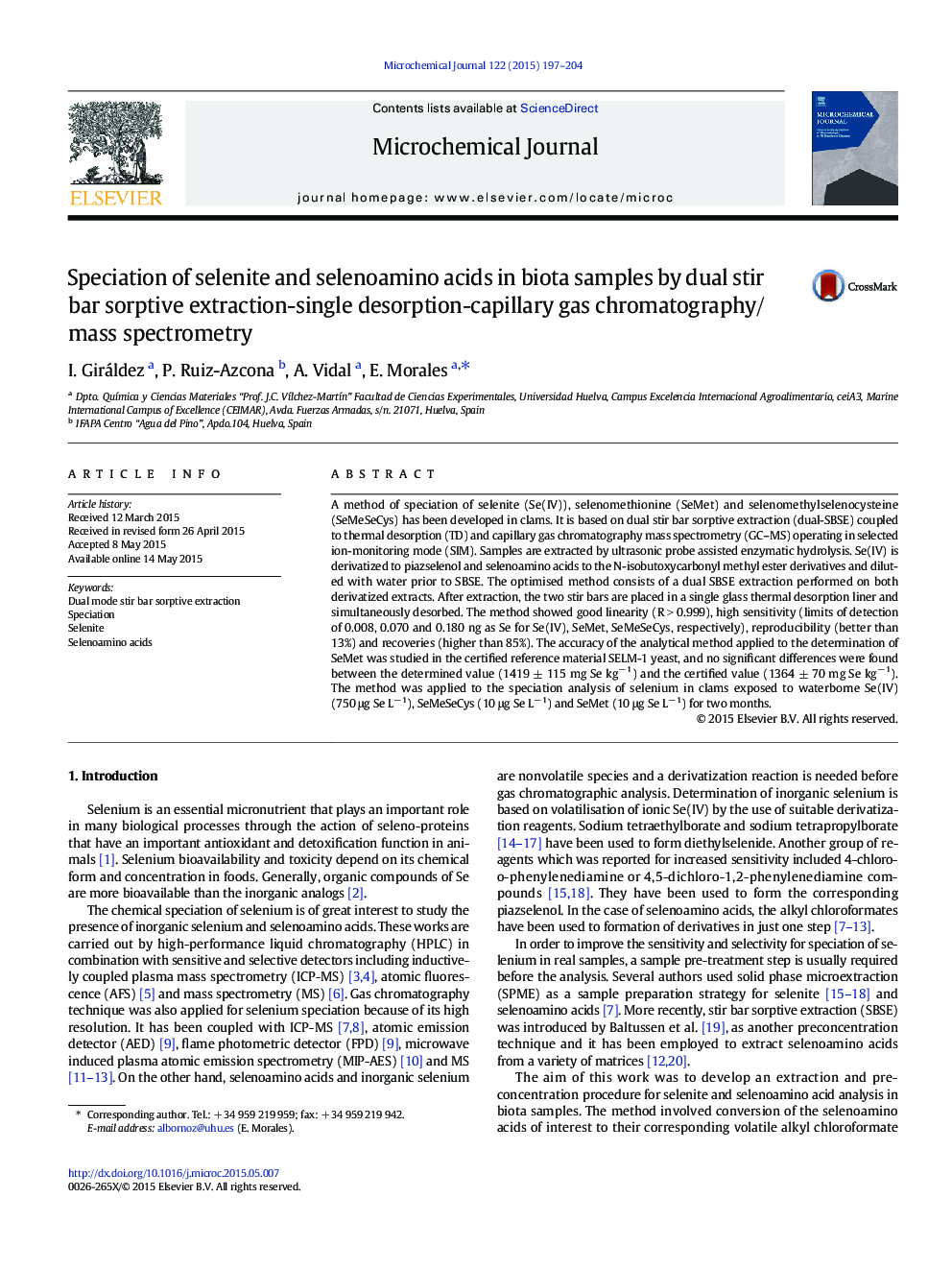| Article ID | Journal | Published Year | Pages | File Type |
|---|---|---|---|---|
| 1227779 | Microchemical Journal | 2015 | 8 Pages |
•A new method for the speciation of inorganic selenium and selenoamino acids in biota by GC-TD-MS was developed.•It used a dual stir bar sorptive extraction of the derivatized selenium species, minimizing the use of solvents.•Good analytical performance with a low detection limits, and high precision and recovery was obtained.•The method was successfully applied to the study of the accumulation and biotransformation of selenium species in clams.
A method of speciation of selenite (Se(IV)), selenomethionine (SeMet) and selenomethylselenocysteine (SeMeSeCys) has been developed in clams. It is based on dual stir bar sorptive extraction (dual-SBSE) coupled to thermal desorption (TD) and capillary gas chromatography mass spectrometry (GC–MS) operating in selected ion-monitoring mode (SIM). Samples are extracted by ultrasonic probe assisted enzymatic hydrolysis. Se(IV) is derivatized to piazselenol and selenoamino acids to the N-isobutoxycarbonyl methyl ester derivatives and diluted with water prior to SBSE. The optimised method consists of a dual SBSE extraction performed on both derivatized extracts. After extraction, the two stir bars are placed in a single glass thermal desorption liner and simultaneously desorbed. The method showed good linearity (R > 0.999), high sensitivity (limits of detection of 0.008, 0.070 and 0.180 ng as Se for Se(IV), SeMet, SeMeSeCys, respectively), reproducibility (better than 13%) and recoveries (higher than 85%). The accuracy of the analytical method applied to the determination of SeMet was studied in the certified reference material SELM-1 yeast, and no significant differences were found between the determined value (1419 ± 115 mg Se kg− 1) and the certified value (1364 ± 70 mg Se kg− 1). The method was applied to the speciation analysis of selenium in clams exposed to waterborne Se(IV) (750 μg Se L− 1), SeMeSeCys (10 μg Se L− 1) and SeMet (10 μg Se L− 1) for two months.
